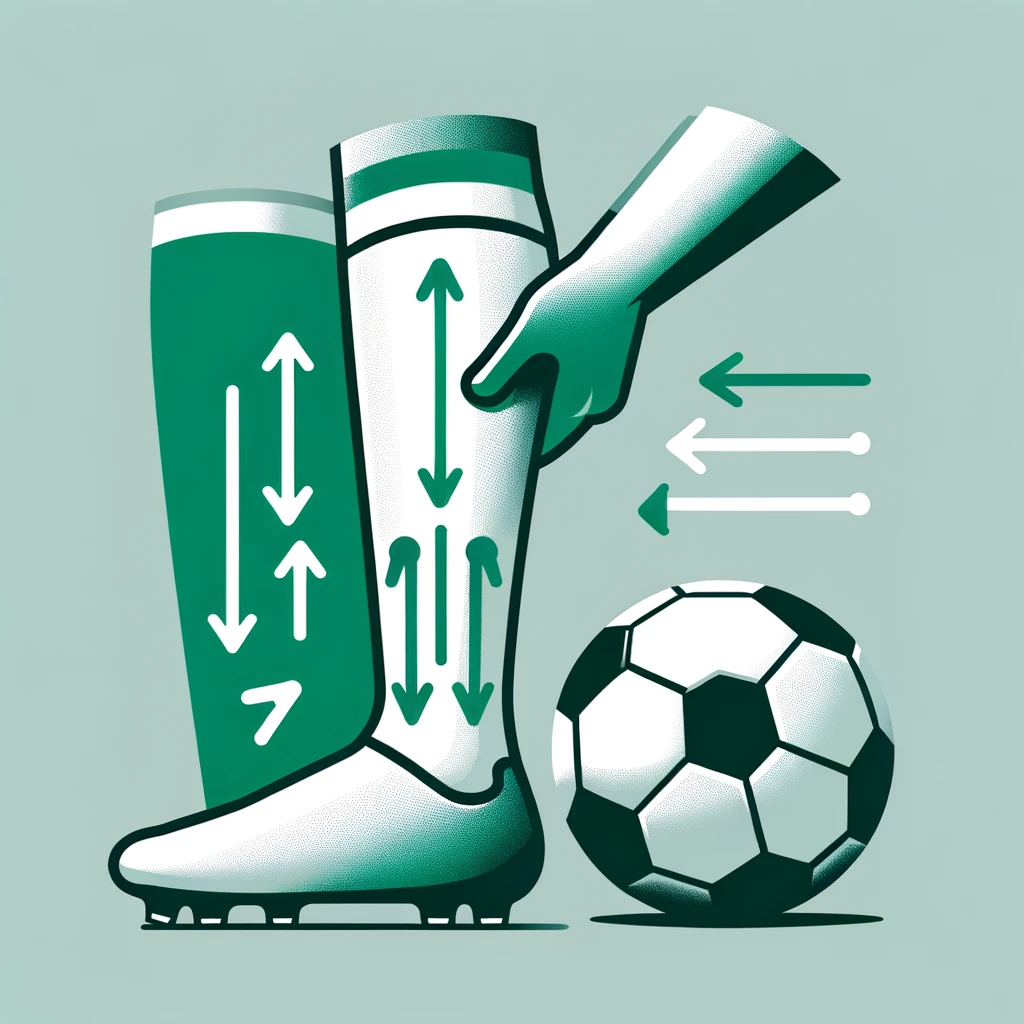Soccer shin guards are a crucial piece of equipment that protect players from injuries during play. Wearing them correctly can significantly reduce the risk of shin splints, fractures, and bruises. This guide will walk you through the steps of putting on shin guards effectively, along with advice for selecting the right type for your needs.
Introduction
Soccer is a sport that involves a lot of physical contact and leg movement, making shin guards an essential piece of equipment for players. Knowing how to properly wear shin guards not only ensures safety but also complies with soccer regulations, as most leagues require them.
Types of Soccer Shin Guards
Before diving into how to wear shin guards, it’s important to understand the different types available:
| Type | Description | Advantages | Considerations |
|---|---|---|---|
| Slip-in Shin Guards | Lightweight, worn beneath compression socks | Offers good mobility | May require additional strapping or tape for secure placement |
| Ankle Shin Guards | Added ankle protection with a built-in stirrup and Velcro strap | Great for extra ankle support and protection | Slightly bulkier but offers comprehensive coverage |
| Shin Socks | Combination of shin guards and socks for convenience | Easy to wear, provides basic protection | Might not offer as much protection as standalone guards |
How to Put On Soccer Shin Guards
Choose the Right Size
Ensure your shin guards fit properly. They should cover the length of your shin without restricting your movement. The top should rest below the knee, and the bottom should cover the ankle bone (if using ankle shin guards).
Wear a Thin Sock First (Optional)
For slip-in shin guards, start by putting on a thin pair of socks. This helps prevent irritation and makes it easier to adjust the shin guards as needed.
Position the Shin Guards
Place the shin guard against your shin. The broader end should be at the top, covering the shin’s width. For ankle shin guards, ensure the stirrup sits comfortably under your foot.
Secure the Shin Guards
- For Slip-in Shin Guards: Pull a pair of compression socks over the shin guards to hold them in place. You can also use tape or shin guard straps for additional security.
- For Ankle Shin Guards: Fasten the Velcro strap around your calf to secure the guard. Make sure it’s snug but not too tight to avoid circulation problems.
Adjust for Comfort and Protection
Make any necessary adjustments to ensure the shin guards are centered on your shins and offer maximum protection. They should feel comfortable and not shift during movement.
Tips for Wearing Soccer Shin Guards
- Comfort is Key: Choose shin guards that feel comfortable during play. You shouldn’t feel restricted in your movements.
- Proper Sizing: Always try on shin guards with your soccer socks and cleats to ensure a proper fit.
- Maintenance: Clean your shin guards regularly to prevent odors and bacteria buildup.
Common Mistakes to Avoid
Even with the right shin guards, improper use can lead to discomfort and inadequate protection. Here are some common mistakes to avoid:
Improper Sizing
- Issue: Wearing shin guards that are too big or too small.
- Solution: Use a sizing guide and measure correctly from just below your knee to above your ankle.
Incorrect Positioning
- Issue: Shin guards not centered on the shin, leading to poor protection.
- Solution: Ensure the guards cover the shinbone fully and are securely in place.
Wearing Over Socks
- Issue: Shin guards worn over socks can slip and offer less protection.
- Solution: Always wear shin guards under your socks to keep them securely in place.
Ignoring Straps or Sleeves
- Issue: Not using straps or sleeves can cause shin guards to shift during play.
- Solution: Use all straps or sleeves provided for maximum stability.
By avoiding these common mistakes, you can ensure that your shin guards provide the best possible protection and comfort during play.
Frequently Asked Questions (FAQ)
What Size Shin Guards Do I Need?
Shin guard size typically correlates with your height. Most brands offer a sizing chart that matches shin guard size to height ranges. Ensure the guards cover from just above your ankle to below your knee for optimal protection.
How Tight Should Shin Guards Be?
Shin guards should be snug enough to stay in place during play but not so tight that they impede circulation or cause discomfort. You should be able to move freely without the guards shifting.
Can I Wear Shin Guards Over My Socks?
Traditionally, shin guards are worn under socks to ensure they stay in place and to comply with soccer regulations. Slip-in shin guards, in particular, require compression socks worn over them for proper security.
How Do I Clean My Shin Guards?
Clean your shin guards with mild soap and water, wiping down the surface to remove dirt and sweat. Avoid using harsh chemicals, and let them air dry completely before the next use to prevent odor and bacteria growth.
Is It Necessary to Wear Shin Guards for Practice?
Yes, it’s recommended to wear shin guards during practice to protect against injuries. Practicing as you play prepares you better and ensures safety.
Can I Use Any Tape to Secure My Shin Guards?
While you can use various tapes, it’s best to use sports tape or specially designed shin guard tape that won’t irritate your skin and can withstand the rigors of play without loosening.
What’s the Difference Between Adult and Youth Shin Guards?
Youth shin guards are designed for smaller, growing legs and often have more padding to protect young players. Adult shin guards come in larger sizes and might have features geared towards higher levels of play, including lighter materials for better mobility.
Conclusion
Wearing soccer shin guards correctly is essential for your safety on the field. By following these steps, you can ensure maximum protection, comfort, and compliance with soccer regulations. Remember, the right shin guards can make a significant difference in your playing experience and protection level.
We hope you will find this article helpful and invite you to check our blog for more!

